
Jul 26, 2024 | Events
Last month, ResoLex was invited to join the International Centre for Complex Project Management (ICCPM) roundtable series, in London. The ICCPM is a not-for-profit organisation, established in 2007 by the Australian government to gather knowledge and best practice from around the world to help improve the performance of complex projects. The global roundtable series is a thought leadership activity, harnessing the collective wisdom of complex project leaders from around the world to produce new insights and practical steps that organisations can take to improve project outcomes. The sessions also provide an opportunity to exchange knowledge and experience, and discover new insights from others across sectors, industries and countries.
The keynote was given by Murray Rowden, Global Head of Infrastructure at Turner & Townsend. As someone with over 30 years of experience in infrastructure delivery around the world, Murray shared his reflections on whether today’s approaches are fit for today’s challenges. His reflections called attention to the artificial nature of the boundaries between disciplines, teams, and organisations, and the impact that these boundaries can have on the delivery of complex projects and programmes. From his perspective, asset owners and operators have recognised that relationships are not where they need to be, and there is a move towards increasingly value-based, long-term relationships with the industry to be able to effectively manage and deliver complex projects.
During the day, we had the opportunity to explore the perspective of complex projects as open systems, interacting with both the internal and external environments, against the more traditional view of projects as closed systems with predefined boundaries. This description provides a shift in focus towards identifying the roles of varied stakeholders and their context or environment in shaping the project’s outcomes.
A number of central themes were explored during the day, with a rich conversation from a broad group of project professionals, clients and the supply chain. Discussion focused on four core areas:
- What is the correct level of collaboration and co-design between the different related functions in a complex project?
- What is the role of project leaders in orchestrating the integration of this intricate web of related, but traditionally distinct disciplines within complex projects?
- How can we/should we best reconfigure project boundaries to align with the full life cycle of assets
- By re-imagining boundaries, can organisations enhance project success rates, optimise resource allocation, and ensure long-term value creation?
Throughout the event, it became increasingly evident that there is a critical requirement to engage stakeholders early from across the project life cycle to define project boundaries and negotiate expectations and desired outcomes. The importance of the client in leading this stakeholder management was highlighted by many, and across the discussions, there was also a strong acknowledgement that the complexity inherent within open systems requires a less hubristic client model. The idea that clients can instead adopt a more collaborative approach with the supply chain, in which we co-design shared outcomes and set up a collaborative culture and behaviours, may allow the client to better support the broad stakeholder requirements and lead to better project outcomes.
The workshop outcomes will be integrated into the wider insights collected from the full roundtable series and will contribute to a better understanding of how we can manage open project boundaries and the relationship with key stakeholders. We look forward to seeing the final outputs of the research and continuing to contribute to the thought leadership in this important area of research.
Led and facilitated by: Collin Smith (ICCPM CEO), and Dr Naomi Mather, (ICCPM Director for Industry Liaison & Member Services)

Feb 27, 2024 | Events
On the 12th of February, two of our Senior Consultants, Tom Chick and Joanna Jarvie attended the ICE’s Big Debate: ‘How do we improve certainty in delivery?’
The topic itself is a question many of us are grappling with, not just in infrastructure, but across a variety of complex projects and programmes in many industries. The debate was a highly informative and engaging event, with views put forward by Mark Hansford, Nick Smallwood, Dervilla Mitchell, Ed McCann, Dr David Prout, David Coles and Mark Thurston.
There was a lot of good debate throughout the evening, with a few key themes that seemed to run throughout much of the discussion:
- Shifting to an outcome-focus
- Planning for success
- Developing people capable of delivering
- Embedding the right environment for the scheme
Tom and Jo have shared their takeaways from the evening structured around these key themes:
Shifting our viewpoint to be more outcome-focused and measuring success based on achievement of the desired outcomes
The usual approach to project delivery fixates on time and cost as measures of success. This occurs even though the purpose for the existence of any project or programme is ultimately to achieve the desired outcomes. Delivering on time and on budget, without delivering the outcomes, is clearly a wasted endeavour, and yet, the success of delivery teams is all too often measured solely on these metrics. There is no point to delivering a project on time and under budget if it does not achieve anything that it set out to do.
Crossrail was raised as an example of a project where delivering against the outcomes has been used to demonstrate success that may outweigh the time and cost overruns. The Elizabeth Line is already the most-used rail line in Great Britain1 and the most highly rated TfL service for customer satisfaction.
One of the things that was raised as an enabler to becoming more outcome-focused, is clearly communicating the importance of these outcomes. Many schemes, like Crossrail, are focused upon providing a public benefit. Being able to clearly articulate these desired outcomes can therefore provide long-term resilience to the scheme through wider approval and support.
Planning for success
The importance of focusing time on planning before diving in to delivery was discussed throughout the evening. Major projects and programmes require detailed planning, team set-up and defined ways of working to ensure that the desired outcomes are understood and achievable. Key to this is connecting with political decision-makers who often put a lot of pressure to ‘get boots on the ground’. It was suggested that communicating with these individuals often does not come naturally to project professionals, however, if we are to reduce uncertainty, educating them on the importance of a considered, planned approach is paramount.
Developing people capable of delivering
The importance of having the ‘right people’ to deliver your project was raised in several ways, with leadership in particular sparking a lot of debate. Relying upon these perceived ‘heroes’ isn’t just unlikely to achieve the desired outcomes, but potentially prevents them from being achieved at all. Rather, the focus should be on upskilling people to build and lead teams that can work together to their own diverse strengths, create alignment, manage the complexity, and deliver integrated major projects and programmes.
This team likewise needs to be bought into the project outcomes and understand why they are doing what they are doing. The 2012 Olympics were used as a great example, in that the vision, messaging and desired outcomes were clear and communicated from the start, with everyone bought in. All of the participants knew what their role was and what they were aiming for. For example, in this particular case, being ready for 2012 was a core desired outcome and critical to the success of the project.
Embedding the right environment for the scheme
The bigger and more complex a project is, the more important it is to manage the interfaces, however, it is also more difficult as these interfaces increase in number and complexity.
On a relatively small and simple project, traditional transactional relationships may suffice, however, the complexities of bigger programmes necessitate cooperative or collaborative relationships to manage the increasing number of interfaces and conflicting priorities.
The ‘right’ environment is therefore different for every project but needs to be established as part of the planning to ensure the needed behaviours and ways of working are articulated and embedded.
The debate showed that there is no one clear simple answer to increasing certainty across the diverse array of mega or giga projects being undertaken, however at the heart of the key themes from the debate lies the need for an effective, diverse team, working together towards clearly articulated and aligned outcomes that define success.
1: passenger-rail-usage-jul-sep-2022.pdf (orr.gov.uk)
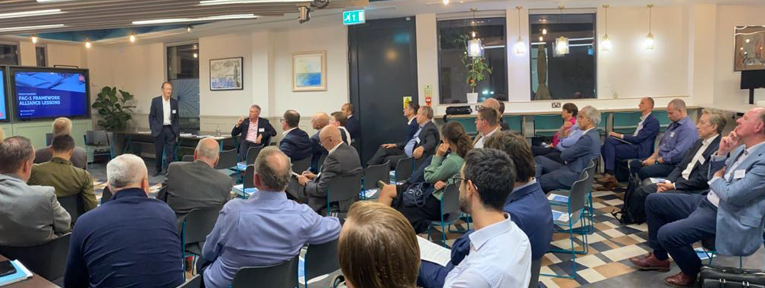
Oct 18, 2023 | Events, Roundtables
Last week, we were delighted to be joined by Professor David Mosey CBE for an update and lessons learned since the launch of the FAC-1 Framework Alliance Contract.
Ed Moore opened the session, commenting that David had first introduced the FAC- 1 Framework to the ResoLex audience at a previous roundtable event in February 2018. It was therefore heartening to see the traction the framework has achieved over the last five years.
David began his presentation by explaining that the FAC-1 is a multi-party framework alliance contract that integrates the procurement and delivery of one or more different projects, with the ability to connect multiple contracts awarded to each collaborative team member. It creates the ability to establish the relationships and systems that the parties wish to use to embed collaborative ways of working, supporting the achievement of improved value, risk management and dispute avoidance.
So far, the contract has been adopted on the procurement of over £100 billion of contracts, ranging from smaller £5 million projects and SME consultant alliances to the £60 billion contractor/ consultant/ supplier procurements of the Crown Commercial Service.
Some of the key features of the FAC-1 contract are as follows:
- Creates a bridge that integrates multiple project appointments and operates in conjunction with multiple FIDIC, JCT, NEC and PPC forms
- Allows alliance members to include the client, any additional clients, an in-house or external Alliance Manager and any combination of selected consultants/ contractors/ suppliers/ providers, with the facility to add additional alliance members
- Enables the planning and integrating of a successful alliance, setting out why the alliance is being created, and stating agreed objectives, success measures and targets, with agreed incentives if these are achieved and agreed actions if they are not achieved
- States how work will be awarded to alliance members, under a direct award procedure and/or competitive award procedure and under early standard form orders
- Describes how the alliance members will seek improved value through shared alliance activities, including a collaborative system for engaging with tier 2 and 3 supply chain members
- Describes how risks will be managed and disputes avoided, using a shared risk register, core group governance, early warning and options for an independent adviser and alternative approaches to dispute resolution
- Provides the flexibility to include particular legal requirements and special terms required for any sector and in any jurisdiction.
David highlighted a number of different examples where FAC-1 has been used successfully, and one of the best examples came from the Ministry of Justice.
New Prisons complex project alliance
The UK Ministry of Justice (MoJ) created an FAC-1 Alliance to procure their £1.2 billion new prisons programme. The alliance integrates the work of ISG, Kier, Laing O’Rourke and Wates as contractor alliance members, with Mace as alliance manager, and supports their use of BIM and Modern Methods of Construction to agree on optimum designs and strategic relationships with key tier 2 supply chain members.
MoJ report that their FAC-1 new prisons alliance has meant they have been able to use the alliancing process both as a contract form and as the means to structure the relationships. This approach helped to embed the collaborative relationship early, from the alliance launch to the transition through the different phases. Each of the four contractor alliance members nominated representatives from their organisation to sit alongside representatives from the MoJ and its other delivery partners (Mace, WT Partnership and Perfect Circle). Together, they formed the Core Group, establishing strong leadership and trust from the outset.
One of the highly positive outcomes of the use of FAC-1 has been greater cost certainty and cost savings. MoJ reported that these included:
- Fees for the pre-construction collaboration phase finalised at the tender stage
- Direct fees (overheads and profit) and staff preliminary rates fixed at the tender stage
- Projected duration and contract value based on previous prison builds at HMP Five Wells and Glen Parva
- Pre-construction supply chain collaboration to build up cost certainty and savings by transparent supply chain engagement for key or critical packages on all four prisons i.e., mechanical, electrical, and plumbing engineering, pre-cast concrete, and cell windows and doors.
Final thoughts
The final message from David was that recent evidence suggests that more public sector clients are starting to look at alliancing as a beneficial method of procuring major projects and programmes of construction work. Alliancing does however require a significant shift in both mindset and behaviours, where each of the parties involved is intent on working collaboratively over a prolonged period to achieve win-win gains. In the absence of an agreed set of processes and structured agreements, there is a tendency to revert to short-term transactional behaviours.
The advantage of FAC-1 is that it provides a set of highly flexible mechanisms which are easy to set up, and then provides the programme leadership with the processes needed to create effective relationships.
You can find the round-up from the first FAC-1 roundtable on our website here: https://resolex.com/events/resolex-roundtable-building-a-supply-chain-alliance/
For anyone thinking of using the FAC-1 contract, David has written a handbook which helps clients, contractors and advisors think through some of the practical aspects of implementing the framework. You can purchase it here: https://www.amazon.co.uk/FAC-1-Framework-Alliance-Contract-Handbook/dp/1913019837
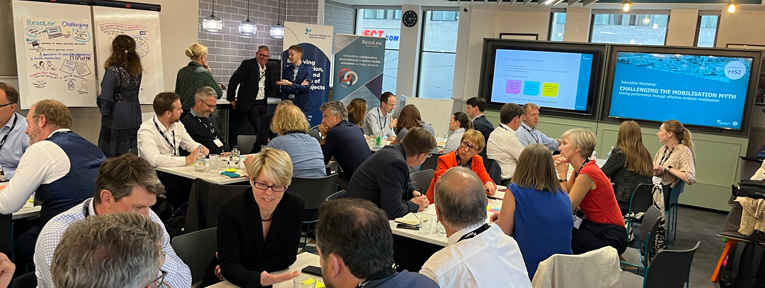
Sep 13, 2023 | Events
On Wednesday the 13th of September, we partnered with the Major Projects Association to host an interactive workshop that challenged the myth of mobilisation – and what an event it was!
We’d like to extend a huge thank you to Liz Lawman, Head of Mobilisation at HS2 (High Speed Two) Ltd and Jonathan Wareham, Project Director at Costain Group PLC for sharing their insights from both a client and contractor perspective. During the workshop, we highlighted some industry best practice and then delved into a session designed to explore the experiences from around the room. We followed Chatham House Rules, but here are a few themes from the afternoon:
- The movement from traditional transactional relationships that prioritise the lowest tender cost, to a more collaborative relationship that can manage the complexities of major project delivery requires aligned mobilisation
- Project teams need to understand the need for, and plan to create a cross-functional workstream for the ‘social/behavioural’ elements of major projects, which includes contract mobilisation
- Ringfence time at the start of a project or programme with senior leaders to co-create with all parties, build the right environment and set the team up with the skills, processes, behaviours and ways of working to develop a collaborative environment
- Early engagement with the supply chain to co-create solutions is hugely important, and provides even more value when it is part of the procurement approach
- The team needs to be aligned behind a common purpose from the start. Work to reduce reliance on assumptions that people will work well together
We would like to thank everyone who attended and contributed to what quickly became an incredibly thought-provoking event. We hope to keep the conversation alive and support the development of a more systemised mobilisation framework alongside the MPA and some of the industry experts who joined us.
As a final lesson from the workshop, ‘don’t build the boat after leaving the port!’
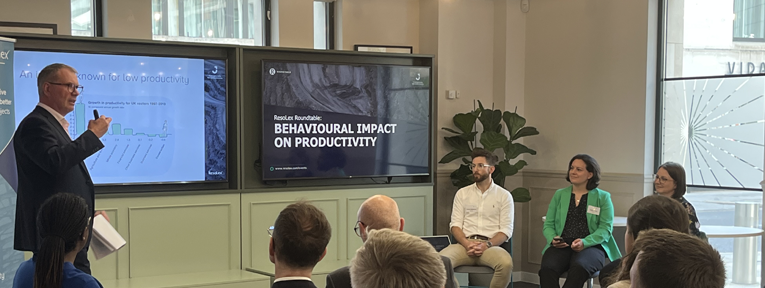
Jul 12, 2023 | Events, Roundtables
Last week, we were delighted to welcome three guest speakers from Jacobs to the ResoLex Roundtable: Jessica Ellery, Gail Hunter, and Joshua Weatherley. Jacobs is a full-spectrum professional services firm including consulting, technical, scientific and project delivery with a workforce of about 60,000 people worldwide.
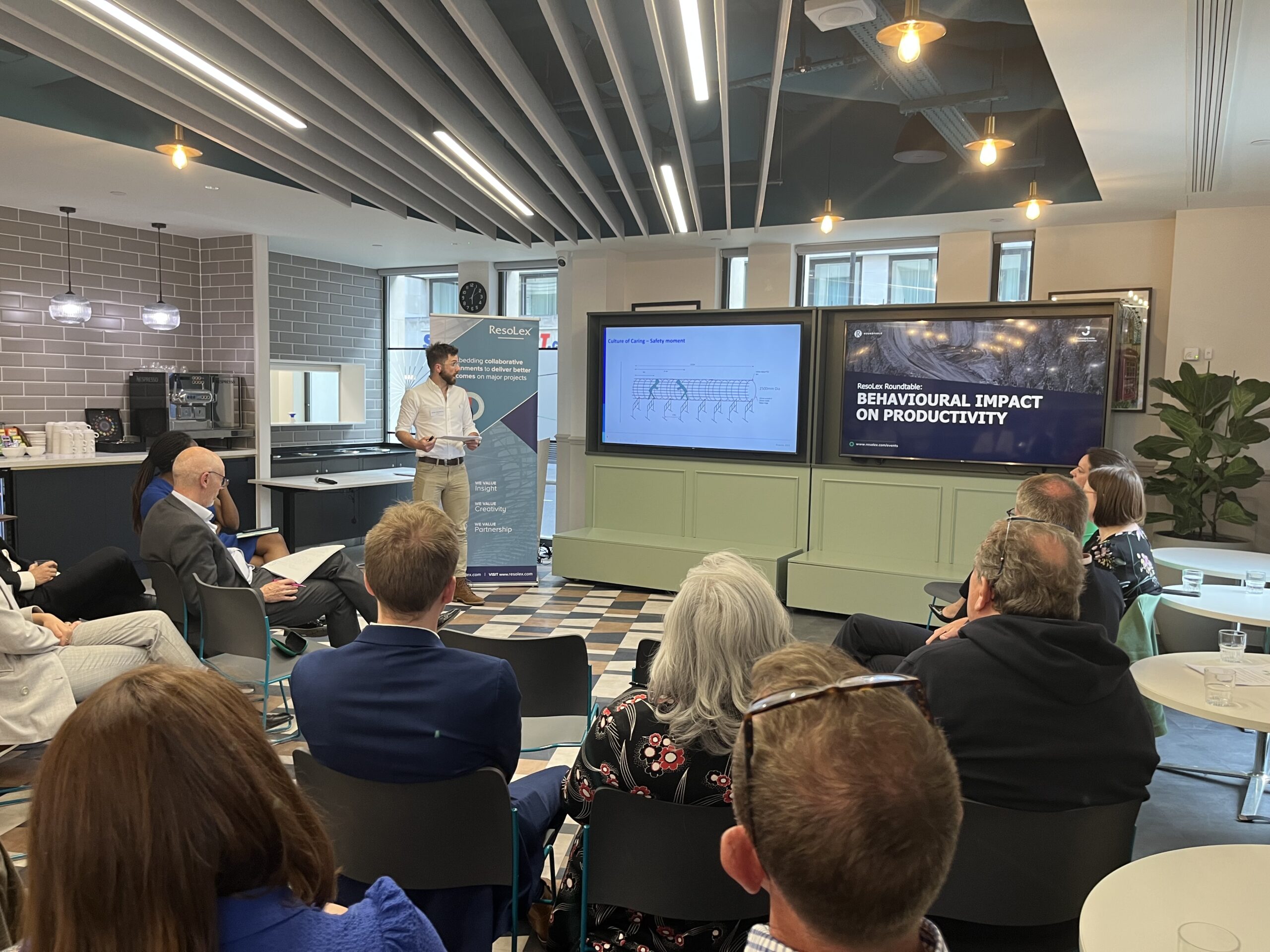
The evening was introduced by our Associate Director, Kelachi Amadi-Echendu, who provided some background to the ResoLex Roundtables and how the event links with our values as a business. Our Chief Executive, Edward Moore then introduced the topic, reminding us that whilst collaboration in itself may be very nice, if it doesn’t improve productivity, one has to question the point! At ResoLex, we see projects as comprising three primary areas of expertise: technical, commercial, and social. We believe that the key elements are interlinked, and the social component is inextricably linked to project performance. During the session, Ed highlighted our model, and expanded on the need to take an integrated approach to the three elements in order to achieve project success.
Jess, Josh and Gail explored the topic through the lens of a live giga project that is in its early stages of delivery in Saudi Arabia. A perspective offered was that perhaps the scale and longevity of such programs offered the chance to truly embed an effective, collaborative social system, even more so than the opportunity we have in the mega-project environment. The presentation began with a poignant safety moment, and then an introduction to four immense projects in the Neom region of Saudi Arabia. Each of these projects are hugely ambitious, the most dramatic being The Line. The Line is a revolution for urban living, which according to the plans will be 500m tall, 200 meters wide and a staggering 170km in length. Whilst a project of this scale is fascinating in itself, the evening’s platform served as the backdrop to a much broader discussion around the challenges of working in such a complex programme environment. Throughout the session, Josh and Gail prompted the audience with a range of engaging questions and themes designed to stimulate debate (a dangerous thing to do with a ResoLex audience!).
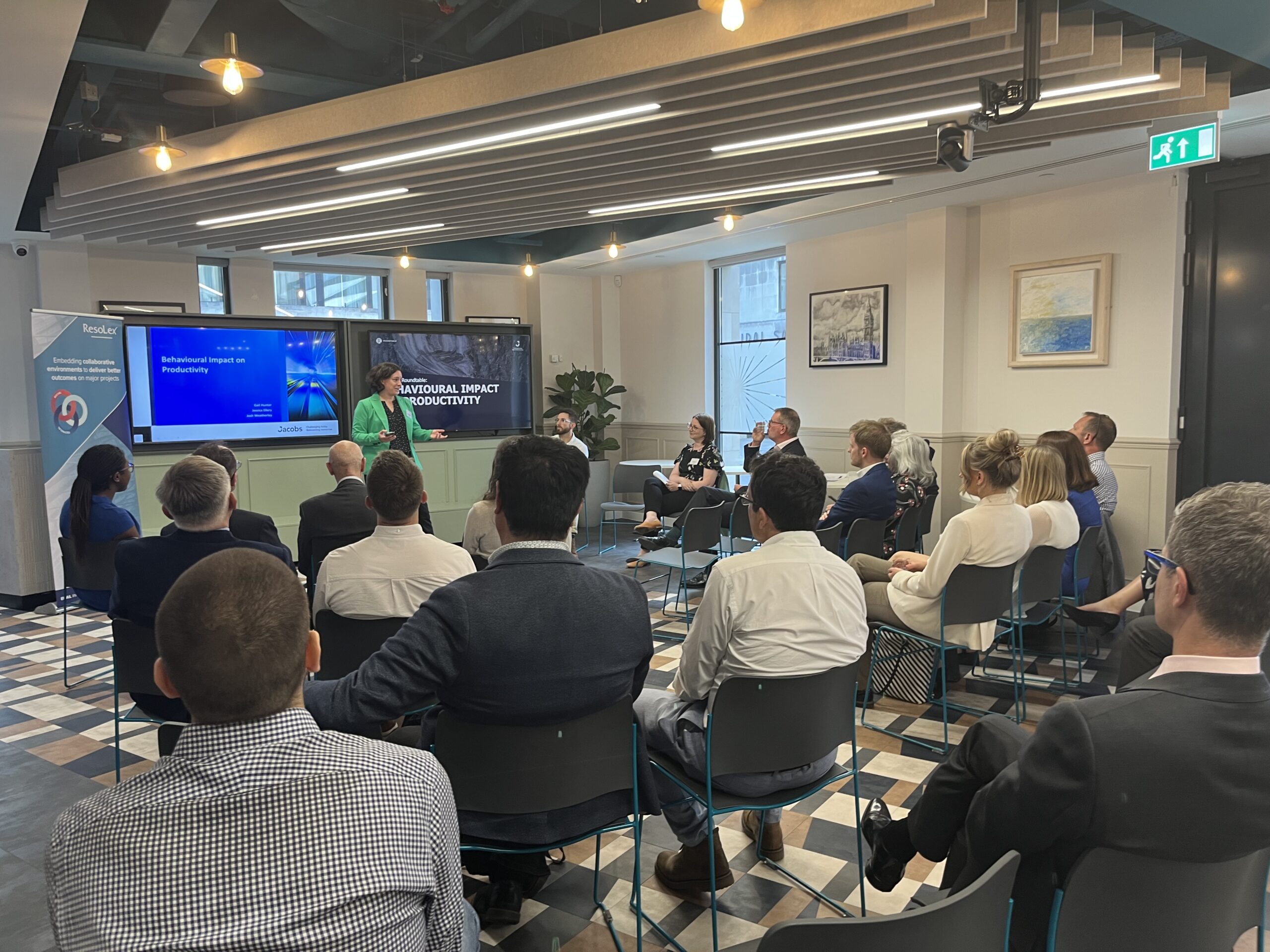
The presentation identified the challenges created by the multiple interfaces that must be managed by the teams and explained that this becomes exponentially more difficult to cope with as size and scale increase, supporting the initial introduction and highlighting the need to therefore factor in behaviours when setting the project strategy. This stimulated a lengthy discussion in the room around the more nebulous concepts of leadership and project culture, there was a common agreement that paying attention to these areas early in the programme is a critical success factor. It was also noted that one of the reasons for the poor performance of mega projects, in general, is the lack of ability for many project leaders to scale up from large projects, and when faced with high levels of complexity, they tend to fall back on simplistic solutions which inevitably fail in more complex and challenging environments.
So, what are the conclusions from the evening’s discussion? Here are our top five takeaways:
- There is a need to ‘operationalise’ collaborative intent. In other words, major projects (and especially giga projects) need to focus on establishing the policies and processes that will embed the principles of collaborative ways of working throughout the programme, rather than limiting the discussion to senior management.
- Focus on the active steps needed to build a positive culture, avoiding the default tendency to revert to transactional behaviours as soon as the project comes under pressure.
- The risk management process needs to acknowledge behavioural risk and recognise that effective inter-team relationships are both a risk and an opportunity.
- Relationship management plans should be a compulsory part of the early planning process and should focus on identifying the critical interfaces that need to be mapped and managed.
- Project leaders need to be trained specifically in the practical tools and techniques that will enable them to make the right decisions when working in highly ambiguous and complex environments.
The session closed with reference to the work of Edgar Schein, and his observation that for successful teams, people need to build ‘Level 2 relationships’ with their colleagues. This level of relationship is where we know enough about the people we work with on a regular basis to be able to see them as human beings, rather than just human ‘resources’, who carry out a functional role.
Overall, it was another stimulating and educational evening, with a wide range of views and opinions. As we see projects and programmes becoming ever more ambitious in their scale and desired outcome, the session is a reminder (should we need it!) that planning, setting up and mobilising for success from the start makes life considerably easier for the teams trying to deliver downstream.
If you’d like to join our next Roundtable, please keep an eye on our events page or sign up for our LinkedIn events newsletter.

May 3, 2023 | Events
Yesterday, we visited ExCeL London for the first day of UK Construction Week 2023. The theme this year focused on the importance of ‘culture change’ within the industry and was celebrated with a Culture Change Hub, a new addition to the Construction Week programme. Sessions at the Culture Change Hub were delivered by a diverse range of speakers and panellists, covering topics including equality, diversity and inclusion, mental health and attracting new entrants to the industry.
It was great to see so many people coming together to challenge the status quo, articulate the cultural barriers within the industry and highlight the need for change. Below are some of our key takeaways from the day.
Culture change: What does it mean for the construction industry?
Panellists:
- George Clarke, Architect, television presenter, lecturer and writer – Channel 4, MOBIE (Facilitator)
- Mike Pitts, Deputy Challenge Director – Transforming Construction – Innovate UK
- Nikita Mikhailov, Personality Psychologist – PsyPub
- Amit Oberoi, Executive Chairman – Considerate Constructors Scheme
- Bijal Mehta, Associate – Marchini Curran Associates
The panel members as part of this seminar identified that we are experiencing an important shift in language. We are moving away from a focus purely on construction, towards the ‘built environment’ as a descriptor for the activities that organisations across the industry are involved in and contribute to. This is a more inclusive way to describe the industry, both allowing room to include designers, clients, and those with boots on the ground delivering the projects and encompassing the societal and environmental impacts of all aspects of what we do as an industry.
The discussion moved to the realm of mega projects, with reflections that they often draw negative attention in the media, reporting is often focused on problems, delays and over-expenditure, with limited mention of the positive impacts, particularly for local communities. The panellists all agreed on the power of stories and narrative, and endorsed a need for positive stories to be spread about the positive transformation that these major programmes deliver.
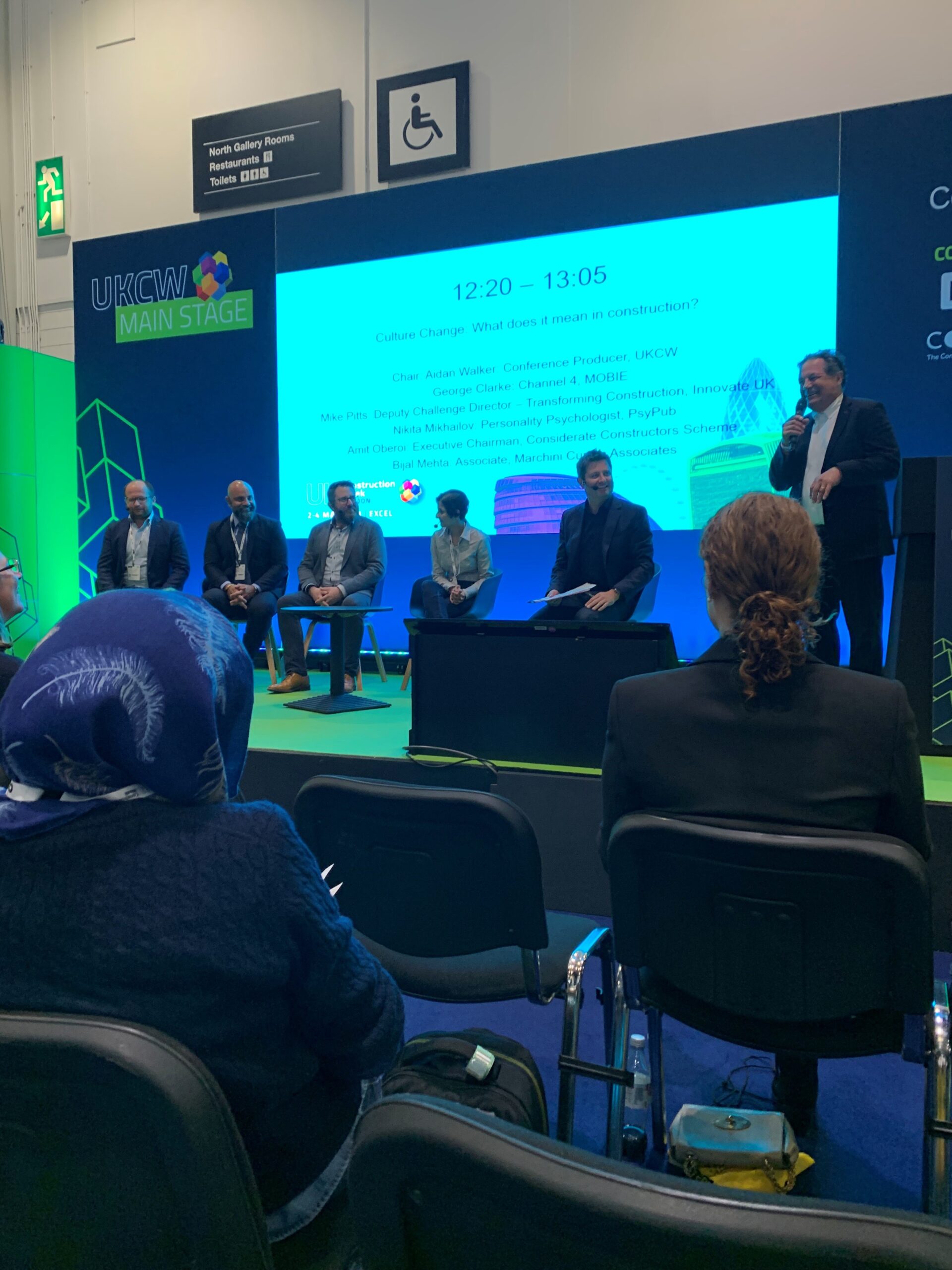
There was a consensus that there is still a need for a huge change in culture and more importantly mindset. The culture of the industry needs to be more inclusive and better at embracing diverse thinking. Discussions on confirmation bias and tribal tendencies reminded us that, as individuals, we like to stick with groups of people who support our thinking and may therefore struggle to harness the benefit of our differences. Actively listening to those who may challenge our thinking will encourage differing perspectives, allowing us to have a better understanding and hopefully, avoid biased thinking.
Cultural change: how?
While it is great to see many people highlighting the importance of cultural change, we need to look at how and more importantly, why?
There is a growing awareness of the impact that culture has on the success of any large group of people trying to work together. The limited research that has been done tends to focus on culture change in existing businesses and institutions but seldom project delivery teams.
Not only will this encourage diverse thinking but a positive and healthy culture will drive increased performance and staff retention.
There is no simple blueprint for how to approach culture on a project but we did start to address the topic in an article that looks at the culture within the project environment and explores how you can build and sustain the desired culture in the project environment: https://resolex.com/news-insight/culture-in-the-project-environment/










